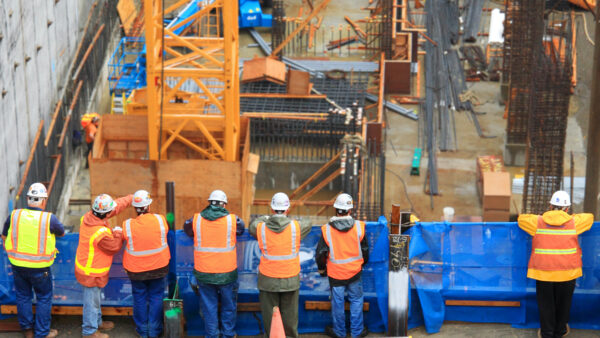As the recovery becomes more substantial business leaders need to think hard about the work they want to go for and put the right structure to achieve it, says Grant Thornton’s Phil Westerman.

Towards the end of 2013, there was a distinct improvement in confidence among those in the construction industry and the word on everyone’s lips for 2014 is “recovery”.
The uptick in construction – confirmed by the recent ICAEW/Grant Thornton UK Business Confidence Monitor for Q4 (which had construction as the second most confident sector behind property) – is looking likely to continue into 2014. If other sectors, such as retail, start to undergo a resurgence, this will have a positive knock-on effect on the construction industry.
However, with all this opportunity comes risk and to make the most of the opportunities the recovery presents, it’s vital that businesses revisit and hone their strategies for growth in an increasingly competitive marketplace. With renewed market confidence comes wider interest and opportunity, which is encouraging new companies and smaller businesses that may have reduced their activities in the recession, to enter the market en masse.
The competition for contracts and tenders is intensifying. Before the recession began, many smaller firms had an unstructured approach to tenders and put themselves forward for everything, regardless of whether it was in an area of particular expertise or part of a broader strategic plan for the company. As a result of this companies were ill-prepared to deal with the challenges of the recession.
“Firms should take the opportunity to really learn the lessons from the lean years and think about what they’re doing, why they’re doing it and whether they should be doing it”
This time around, firms should take the opportunity to really learn the lessons from the lean years and think about what they’re doing, why they’re doing it and whether they should be doing it.
Companies can consider a whole range of options to achieve growth, such as mergers, joint ventures and expanding overseas, but before all of this their core strategy must be developed to ensure they are being selective and focused in their approach to tendering.
It may seem obvious, but ask the questions: which contracts do we really want and why? Where does our expertise lie and how can we best capitalise on that? Evidence suggests that this is starting to happen. As developers fight to secure their preferred contractors, those same contractors are being more selective about the projects they bid for.
Excluding house building, the majority of large contract awards at the moment are coming from the public sector, through local government and national infrastructure projects. In London, the resurgent commercial property market has resulted in a large volume of contract wins. Wherever the work comes from, when it comes to high-profile projects it’s all about securing longer-term order books — contract wins of this nature are providing guaranteed long-term revenue streams.
Large-scale opportunities to look out for in 2014 and beyond include:
- Infrastructure. The December announcements from the government for the National Infrastructure Plan present a lot of opportunity, as does the news that six insurance firms are planning to invest a total of £25bn in new infrastructure projects.
- International construction, particularly around sporting events. In 2014 there’s the Winter Olympics, the Commonwealth Games and beyond that the World Cup and the next Summer Olympics in 2016. The advertising ban has been lifted for UK firms that worked on the London 2012 Olympics, so there will be an opportunity for those with the appetite to go overseas or expand their overseas operations.
- The Priority Schools Building programme. This will also likely feed through to output next year, although many tender awards have already been made here.
- House building is likely to continue to be one of the main drivers for the short term, although some house builders are highlighting that labour and material cost rises starting to creep in. A lot of skilled labour was lost in the downturn, so this will need to be addressed.
Once a flexible strategy has been determined, there will be an impact on the wider business. With success comes the need for more investment. For example, some contracts and sectors are more labour intensive, some will rely heavily on subcontractors and supply chain, and some will require heavy capital spend.
Hopefully lessons have been learnt from the downturn regarding the importance of robust systems and processes, governance arrangements, the quality of management reporting and having a well-controlled strategy for tendering. With these in place businesses shouldn’t overstretch themselves again in seeking to achieve their growth targets.
Making the most of the opportunities in the period of recovery is about a sensible well-balanced strategy and not just about top-line revenue growth.
Phil Westerman is a partner and head of construction at Grant Thornton UK








